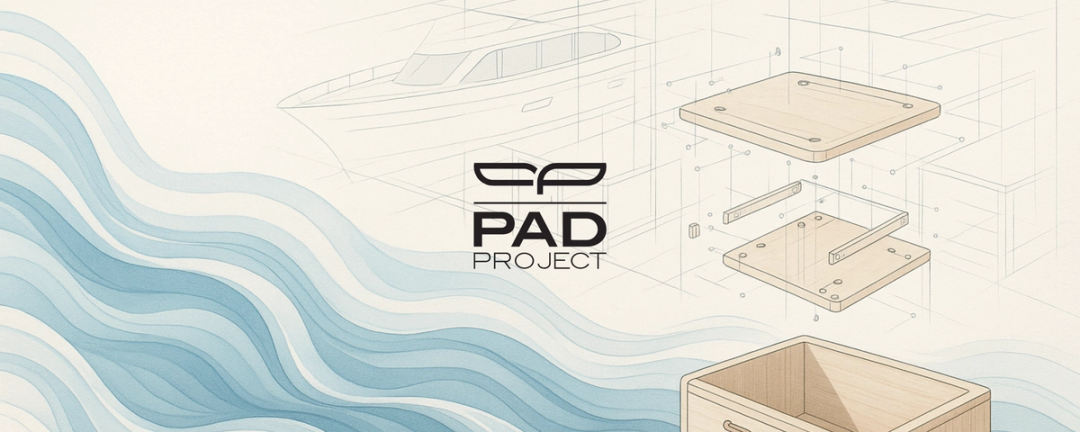

In the world of pleasure boats, every project is a unique case. Each piece of furniture must adapt to living structures — influenced by curves, systems, and materials, and subject to millimetric variations. Despite the use of digital tools, the traditional approach to yacht interiors often follows a fragmented model: design, survey, production, and installation exist as separate, disconnected phases.
This discontinuity leads to:
Even in highly skilled teams, the craftsmanship involved in production may become diluted along the way, affecting efficiency and consistency.
An ideal scenario emerges when design and production are in dialogue. When each component is conceived to be manufactured and installed — from the very first digital model. When every measurement originates from the real space, thanks to laser scanning and parametric 3D modeling. When each file — from models to drawings — follows an intuitive, structured, and shared hierarchy.
In this environment:
The project develops an internal coherence that runs through all its phases: from concept to construction site, and into maintenance.
To reach this state of balance, PAD PROJECT has developed a structured method that combines the flexibility of artisanal craftsmanship with the solidity of engineering processes.
It all starts with a digital scan: a precise 3D capture that reflects the real space and enables highly accurate design. This is supported by the definition of gravity points — fixed, shared coordinates that guide alignment and referencing throughout the entire process.
This system ensures consistency between drawings and models, even in complex or variable environments.
Each furniture component is modeled using parametric tools and intelligent references. The file structure follows a modular, scalable logic: every component is part of a larger whole, yet can be independently extracted, updated, or replaced — while maintaining coherence with the overall system.
Documentation is an essential part of the process. Every component comes with:
Everything is designed not just to be readable, but usable — by production, by installers, and by project managers.
This method allows the process to be replicated across different projects, preserving coherence even in architecturally diverse environments. The same operational system can be adapted to various needs — integrating architectural, structural, and technical constraints.
In a sector where standardization is rare and customization is the norm, PAD PROJECT has structured a method that harmonizes flexibility with technical rigor. Navigating through suppliers, designers, artisans, and shipyards becomes possible through a common language made of data, geometries, and shared hierarchies. It’s a process designed to span the entire project timeline — and remain valid beyond it, as a technical archive.
To truly innovate in the world of yacht interiors is to move like water: with direction, adaptability, and continuity. It’s not about breaking the rules — but following one that is deeper, more natural, and more effective.